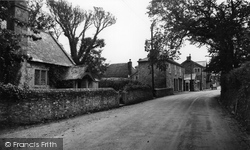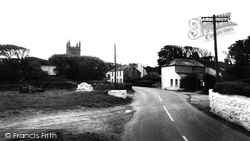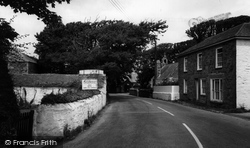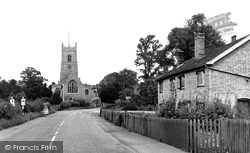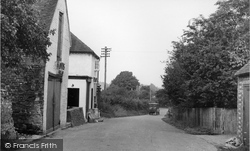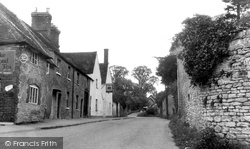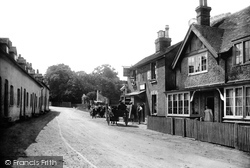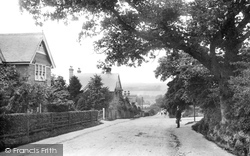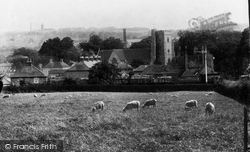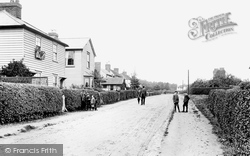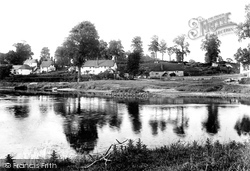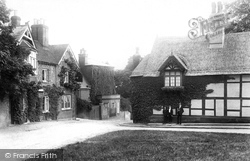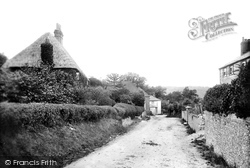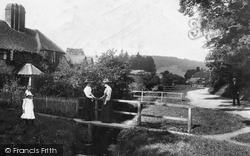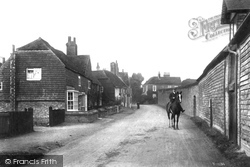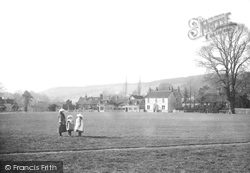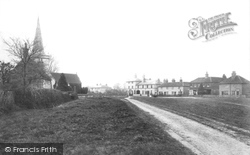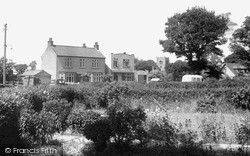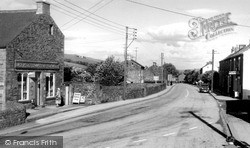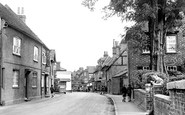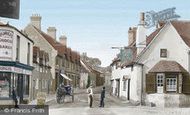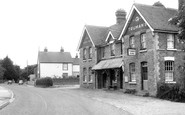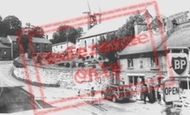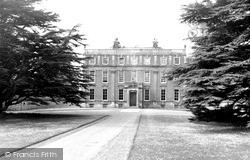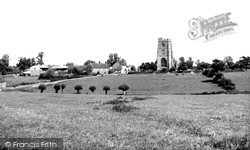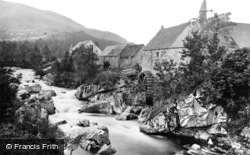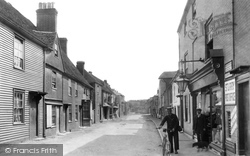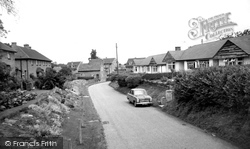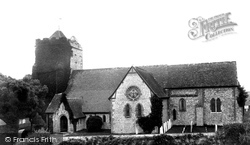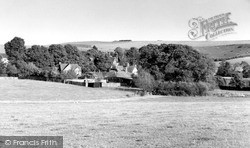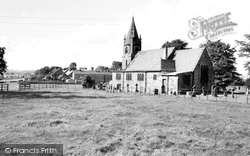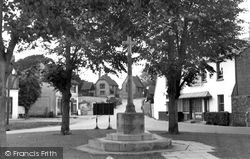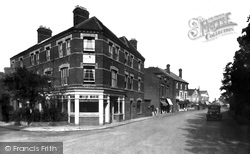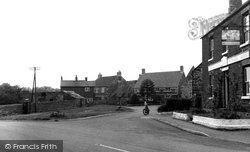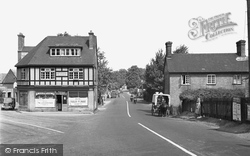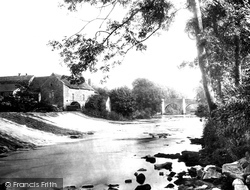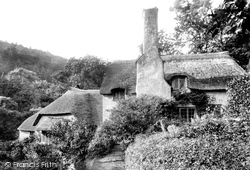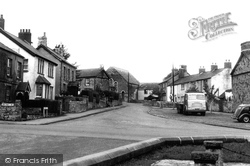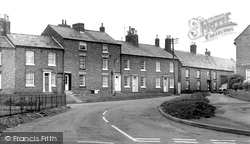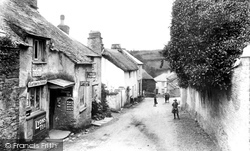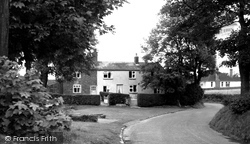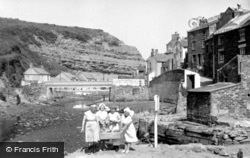Places
5 places found.
Those places high-lighted have photos. All locations may have maps, books and memories.
Photos
9,649 photos found. Showing results 161 to 180.
Maps
18 maps found.
Books
13 books found. Showing results 193 to 13.
Memories
4,612 memories found. Showing results 81 to 90.
The Polehampton Schools
I think this picture could show Mr Farthing who was a teacher at the Boys School, near the railway bridge. When I was walking to and from the girls' school at the other end of the village I often used to meet him rolling along, ...Read more
A memory of Twyford in 1953 by
Colomendy Camp School
I attended Colomendy School for about two years, coming from the City of Liverpool. I was fascinated with all the open spaces and especially the mountain - Moel Fammu. I can remember having great times there: walking into Mold ...Read more
A memory of Loggerheads in 1947 by
So Many Memories
My family arrived in Wargrave just after the war. We moved into a flat above the Post Office/ Telephone Exchange. Dad was a caretaker operator. Things I remember about the village were of course the nearby river, the houses so ...Read more
A memory of Wargrave by
Happy Weekends
For some time back in the late '70's/early '80's I used to ride my motorbike from Worcester to visit my then girlfriend, Judith, at Sawtry. She had a post as a teacher at the nearby school. Used to love the ride on a sunny, summer Friday ...Read more
A memory of Sawtry by
Time For A Rest
We used to go on bike rides from Meopham and always went through Longfield Hill on our way. I do remember my brother entering in to a pool contest there with adults and winning the contest and getting a new two piece cue. It was ...Read more
A memory of Longfield Hill in 1977 by
Great Houghton Ancestors
My 6 x great-grandparents, Thomas Pell and Isabell Emery, were married at the Parish Church on 13/4/1732. Their children were born in the village, and Thomas, Isabell and some of their children were buried in Great ...Read more
A memory of Great Houghton by
Yesterday's Birch
I REMEMBER BIRCH IN 1960'S. THE VILLAGE SHOP WAS RUN BY A JEWISH MAN CALLED MR WOLFE. WHEN YOU CROSSED THE ROAD ON TO WHITTLE LANE THERE WAS A ROW OF HOUSES THAT WERE ATTACHED TO THE WHITE HART PUB . AS YOU WALKED UP THE LANE ...Read more
A memory of Birch by
The Good Old Days At Betws Yn Rhos
Seeing this picture brings back many memories of helping my father to serve Petrol at our small village shop, called Min Afon Stores. Not too sure if that is not me, in the picture, as we actually went out to ...Read more
A memory of Betws-yn-Rhos by
School Boy
I lived in Lochgoilhead in the late 1950's attending a small mixed school at the beginning of the village. My father, worked for the Admirality. My three brothers and sister, were born there. We moved to Carrick Castle in late 1952 and ...Read more
A memory of Loch Goil in 1950 by
Hop Picking
I used to go to Little Chart Farm, Pluckley as a child, being born in the East End in 1946. My memories are of freedom and adventure, long, happy carefree days spent in the beautiful Kent countryside, for a few weeks each summer. My aunt ...Read more
A memory of Pluckley in 1956 by
Captions
5,016 captions found. Showing results 193 to 216.
The Village 1959 At the west end of the village, at the junction of Gainsborough Road with the A30, is this former school of the 1880s, built in rock-faced rubble stone and ashlar dressings.
Rode church is at the south-east end of the village, the bulk of which is to the north-west towards the River Frome. This view was taken from the south-west.
TO THE modern visitor, Mobberley appears to be strung out along Town Lane between Alderley and Knutsford, with at least three centres to the village.
The village of Braemar is situated on the banks of Cluny Burn.
This interesting picture of the village street and the post office shows the village postman about to mount his bicycle.
This small village, about three miles to the east of Loughborough, has in recent decades expanded to accommodate country- dwelling commuters.
Only a stone's throw from the historic settlement of Arundel, the village of Burpham is a gem of a place.
The village of Upper Beeding nestles against the hills. Confusingly, Upper Beeding is lower than its namesake Lower Beeding, which lies about 15 miles away near Horsham.
The village sign shown on the right of the photograph depicts a cuckoo, a rebus for Cuckfield, whilst the village stores (left) were a branch of Spar and also housed the local post office
The name of the village had an 'e' on the end until the railway company put up their sign spelt 'Gisburn', and the 'e' was forgotten.
The small village of Burnt Yates in Nidderdale is graced by this neat little Victorian sandstone church.
The great house was New Place; it has now been converted into cottages. It was the home of the Palmer family in the time of Henry VIII. Ecclesden Manor is a long, low Tudor-style house built in 1634.
Known as the village of millionaires at the turn of the century (because no less than six lived in the village), Overstrand maintained its exclusivity for many years.
There are two greens in the village and this view shows The Plough Inn nearby. The Old Plough was opposite but closed in 1948, the licence being transferred to the 'new' Plough.
Is the lady on the right expecting the two motorcyclists? Nearby, a Roman Catholic church was built in 1939. Hollands Wood is close to the village, and here there are pleasant ponds.
When this picture was taken there had been a Blue Bell inn in the village for over 140 years.
The village is part of the Holnicote Estate, the gift of the Acland family to the National Trust, to which many of the village's thatched cottages now belong - their preservation is thus assured.
The mechanisation of weaving in the early 19th century robbed the village of both its industry and population, and the hall, the inspiration for Ferndean Manor in Charlotte Brontë's novel Jane Eyre, was
All the hustle and bustle of the annual horse and sheep fairs, held in the village of Topcliffe, on the A168 trunk road south of Thirsk, until the late 1960s, are captured in this splendid photograph.
This view up Parish Road affords a glimpse of what was a centre of communication for the village.
Like Geddington, the village of Hardingstone is famous for its Queen Eleanor Cross, erected by Edward I in memory of his wife. The funeral procession rested here en route to London in 1290.
Slapton was one of the villages evacuated during the war. Villagers were given only a few days to pack up their belongings and move away.
The rivers Ribble, Dow and Douglas meet at Freckleton, and were used by the Romans to get supplies to Kirkham.
When the village relied almost entirely on fishing for a living, it would be the women who baited the lines, usually with mussels, or sometimes limpets.
Places (5)
Photos (9649)
Memories (4612)
Books (13)
Maps (18)




